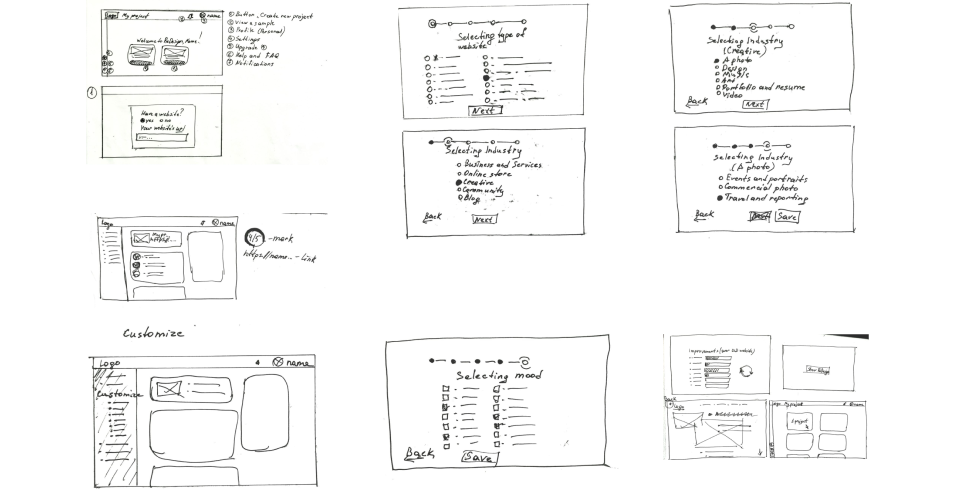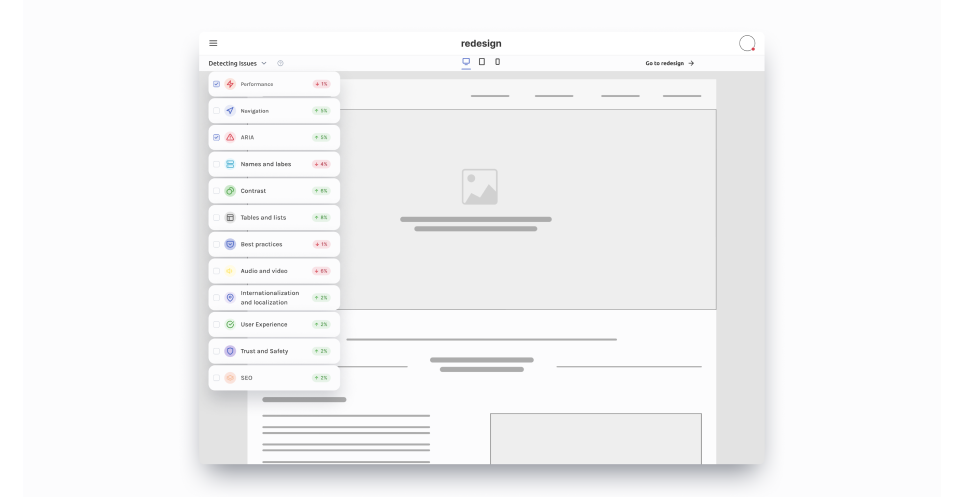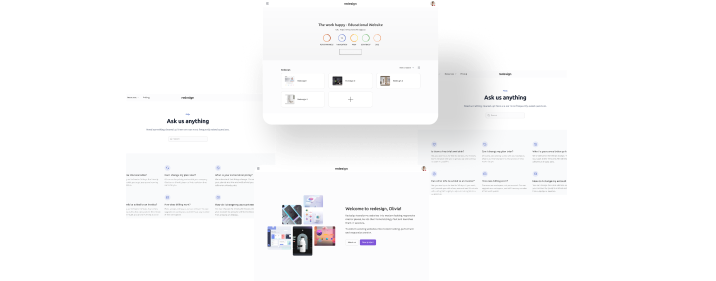For the research phase of our project, we wanted to:
- Gain an understanding of the website redesign market as a whole
- Research what's currently available to users in terms of website redesign tools.
- Identify customers' motivations and pain points so we can design with them in mind.
We deployed a survey across various social media platforms, receiving 233 responses.
Before starting any design work, we work closely with the product team to ensure we are all aligned on the goals of the product, the timeline we are working with, what is within scope, and who our target user is.
To better understand our user's mood and feelings, we created the customer journey map, which shows what problem our user faces at every stage of the experience.

I ran a brainstorm amongst the design team to get out all of our ideas. We were narrowing down on ideas by voting on our favourites and capturing the MVP.

From the brainstorming, we wireframed out different concepts across the entire journey to gather feedback before refining designs.

We conducted remote user testing with a range of customers. It was an iterative process. Once feedback was gathered, we would revisit the prototypes and test them again.
After remote user testing, we debriefed on our findings to narrow down what we needed to iterate on next before finalizing the designs.


As part of the future vision, I created a user flow of the platform to help engineers understand how the overall site architecture worked. The main areas were segmented as follows:

Conclusion
Working in an early-stage startup was an extremely steep learning curve. It was an eye-opening experience that taught me a lot about being lean and knowing when and where to focus your energy and efforts.
Some key takeaways from this project are:
- Focus on building an MVP. In a startup, there is only so much time and effort that you can invest, so it's essential to focus on the features that can deliver the highest value for your users.
- Don't worry too much about the detail. Earlier in my journey, I made the mistake of worrying about the look of the UI. Taking a step back and reassessing the user flows helped me to reprioritize the UX.
- Focus on the problem. Your user's pains will be solved, so keeping that front of mind is crucial as it's easy to lose sight of this when you're bogged down in the day-to-day.
